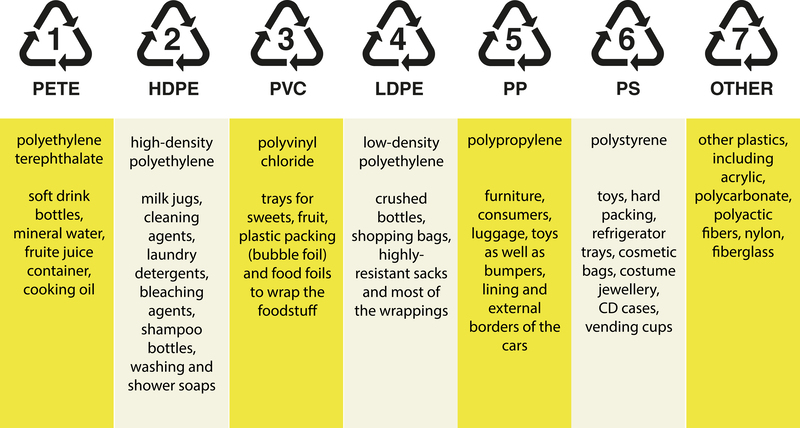Responsible Ways to Dispose of PPE Waste to Protect Our Environment
As the world continues to face global health challenges such as pandemics and pollution, the usage of Personal Protective Equipment (PPE) like masks, gloves, face shields, and gowns has soared. While PPE is crucial for personal and public safety, improper disposal of PPE waste poses severe risks to our environment. From polluting landfills to contaminating oceans and harming wildlife, mismanaged PPE waste is a growing environmental crisis. This comprehensive guide explores responsible methods of PPE waste management to protect our planet while maintaining our health and safety.
Understanding the Environmental Impact of PPE Waste
PPE waste includes single-use items made from plastics and synthetic fibers, which can take hundreds of years to break down. The surge in PPE use during health emergencies has resulted in massive quantities entering daily waste streams. Mismanagement can lead to:
- Land pollution: More non-biodegradable PPE fills up landfill space.
- Water contamination: PPE litter is washed into rivers, lakes, and oceans, threatening aquatic life and water quality.
- Air pollution: Incineration of PPE generates toxic emissions if not done responsibly.
- Wildlife hazards: Animals may ingest or get entangled in discarded PPE, causing injury or death.
Why Proper PPE Disposal Matters
An environmentally responsible PPE waste disposal strategy reduces pollution, conserves natural resources, protects public health, and safeguards wildlife. By understanding proper PPE waste disposal techniques, individuals, businesses, and governments can collectively make a significant positive impact on environmental sustainability.

Recommended Responsible Disposal Methods for PPE Waste
There isn't a single universal method for disposing of PPE waste safely. The ideal approach combines multiple strategies tailored to local regulations and infrastructure. Below are the most responsible PPE waste management practices:
1. Source Separation
Separating used PPE from regular household or business waste is the first crucial step. This prevents cross-contamination and enables more effective waste handling. Key recommendations:
- Use designated bins or bags: Clearly label containers as "PPE Only" to avoid confusion.
- Avoid compacting: Do not smash or press down PPE in the container, as it may pose infection risks and make sorting harder.
- Keep dry and secure: Store used PPE in a leak-proof, closed bag or container to prevent spillages.
2. Proper Bagging Techniques
Used PPE must be bagged securely to protect sanitation workers and the public from potential contamination. Follow these guidelines:
- Use thick, non-tearable plastic bags for containment.
- Tie bags securely before disposal to minimize exposure.
- If possible, double-bag particularly contaminated items for extra protection.
3. Municipal Collection
Most communities have essential protocols for PPE waste disposal via municipal waste management. Adhering to these guidelines ensures safe and compliant removal. Important tips include:
- Check with your local waste authority for updated instructions regarding PPE disposal.
- Do not place PPE in recycling bins unless specified, as contamination can disrupt recycling operations.
- For households with ill or quarantined members, store PPE waste for at least 72 hours before collection to reduce infection risk (follow local guidance).
4. Specialized Collection Points
In some regions, special drop-off locations for PPE waste have been established. These bins are typically found in:
- Hospitals and clinics
- Pharmacies
- Public transportation hubs
- Large workplaces or shopping centers
Always use these bins for disposing PPE when available. They are managed by organizations equipped to safely transport and treat hazardous materials.
5. Incineration (With Emission Controls)
Incineration is a traditional method for treating infectious medical waste, including PPE. It reduces volume and eliminates pathogens but can emit harmful pollutants if not properly managed. To minimize environmental impact:
- Use modern incinerators with emissions filters.
- Audit regularly to ensure emissions standards are met.
- Explore alternative, cleaner technologies when possible.
6. Autoclaving
Autoclaving uses high-pressure steam to sterilize and break down infectious waste like used masks and gloves. This method is effective in:
- Killing bacteria and viruses.
- Making waste safer for further handling, landfill, or potential recycling.
After autoclaving, PPE waste can often be disposed of as regular non-infectious solid waste, reducing environmental and public health risks.
7. Responsible Landfilling
Not all PPE can be safely incinerated or autoclaved. When landfill becomes necessary, best practices include:
- Choosing engineered sanitary landfills that prevent leakage of contaminants.
- Ensuring waste is properly sealed and segregated from organic matter.
- Covering PPE waste to prevent it from blowing away or being accessed by wildlife.
8. Recycling Efforts for PPE Waste
Some types of PPE, especially items made primarily of plastic, are increasingly being recycled by innovative programs. Examples include:
- Masks and face shields: Programs like TerraCycle collect PPE for specialized recycling.
- Gloves: Some nitrile gloves can be recaptured and processed into new plastic goods.
- PPE packaging: Boxes or wrappers may be eligible for standard recycling streams.
Important: Never place used PPE in household recycling unless the facility specifically accepts it, as most curbside recycling is not equipped to handle contaminated waste.
9. Advances in Biodegradable PPE
The future of sustainable PPE disposal may rely on biodegradable or compostable PPE alternatives. New innovations use plant-based materials or bioplastics designed to break down more quickly in composting facilities. To support this trend:
- Choose biodegradable PPE when available.
- Dispose according to local composting guidelines--only compost certified compostable PPE in industrial facilities, not home compost piles.
Key Considerations for Households and Businesses
Whether you're a homeowner, business owner, or healthcare worker, adopting responsible PPE disposal habits can make a collective difference. Here are essential steps for each sector:
For Households:
- Educate family members about PPE disposal best practices.
- Keep a separate, lined bin for used masks, gloves, and wipes.
- Wash hands after handling PPE waste, even if bagged.
- Never flush PPE down the toilet--it can block pipes and pollute waterways.
For Businesses and Institutions:
- Provide clearly marked PPE disposal points throughout facilities.
- Train staff in safe PPE removal and disposal protocols.
- Arrange regular collection by licensed medical waste handlers if significant volumes are generated.
- Display signage highlighting PPE waste do's and don'ts.
For Healthcare Providers:
- Follow national healthcare waste management guidelines rigorously.
- Double-bag infectious or blood-soiled PPE before disposal.
- Work with certified sharps and clinical waste contractors.
- Invest in on-site sterilizing or autoclaving equipment if possible.
Raising Public Awareness and Policy Support
Besides personal responsibility, government and community action is vital for reducing the environmental impact of PPE waste. Essential steps include:
- Legislation: Governments should enforce clear regulations for handling and disposing PPE, including penalties for littering or illegal dumping.
- Public education: Awareness campaigns can teach people the importance and methods of eco-friendly PPE waste management.
- Supporting research: Funding innovation in biodegradable PPE and advanced recycling facilities.
- Partnerships: Encouraging collaboration between businesses, municipalities, and NGOs for joint collection and recycling initiatives.
The Role of Innovation in PPE Waste Disposal
Technology is reshaping how we deal with PPE waste. Modern solutions being explored worldwide include:
- Smart disposal bins that use sensors to track when PPE bins are full, optimizing collection and reducing overflow.
- Enzymatic recycling that breaks down plastic-based PPE into reusable raw materials.
- Decentralized waste-to-energy units for on-site conversion of PPE waste into safe energy.
Embracing such innovations can significantly reduce the environmental footprint of PPE usage worldwide.

Actions You Can Take Today for Responsible PPE Waste Disposal
- Always bag and tie used PPE before discarding.
- Do not litter PPE in public places or natural settings.
- Familiarize yourself with local disposal regulations for PPE and follow them strictly.
- Advocate for more communal PPE waste collection points in your area.
- Opt for reusable or biodegradable PPE products when practical and safe.
Conclusion: Protecting Our Environment Through Responsible PPE Waste Disposal
The widespread use of PPE is essential to combat infectious diseases, but it should not come at the expense of our environment. Responsible PPE waste management is a shared duty that requires participation from individuals, businesses, healthcare providers, and governments. By adopting proper disposal techniques, supporting recycling initiatives, and fostering innovation, we can minimize the ecological damage caused by PPE waste. Let's all strive to dispose of PPE responsibly--protecting both our health and the planet for generations to come.
Remember: Every mask and glove disposed of properly is a step towards a cleaner, safer, and more sustainable world.
